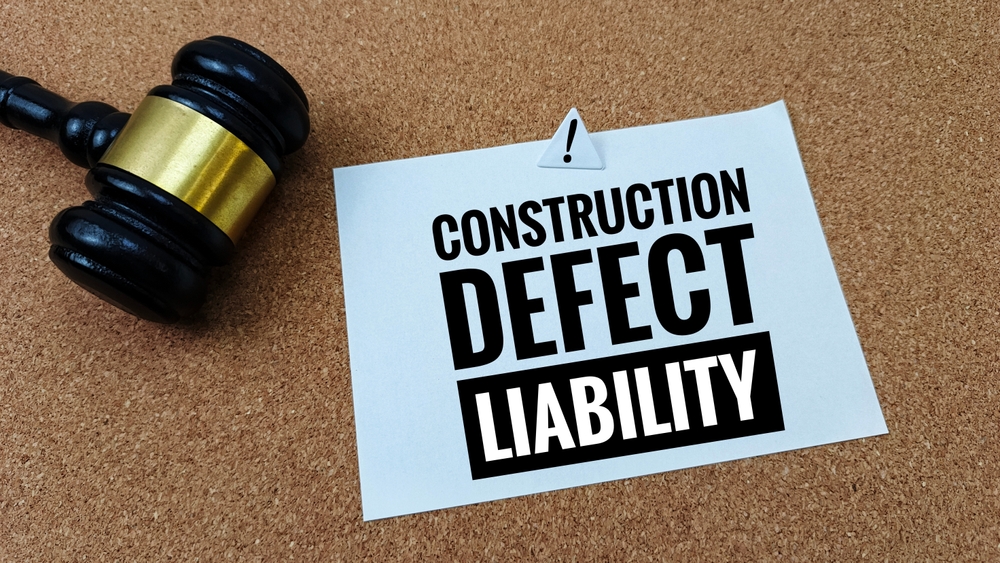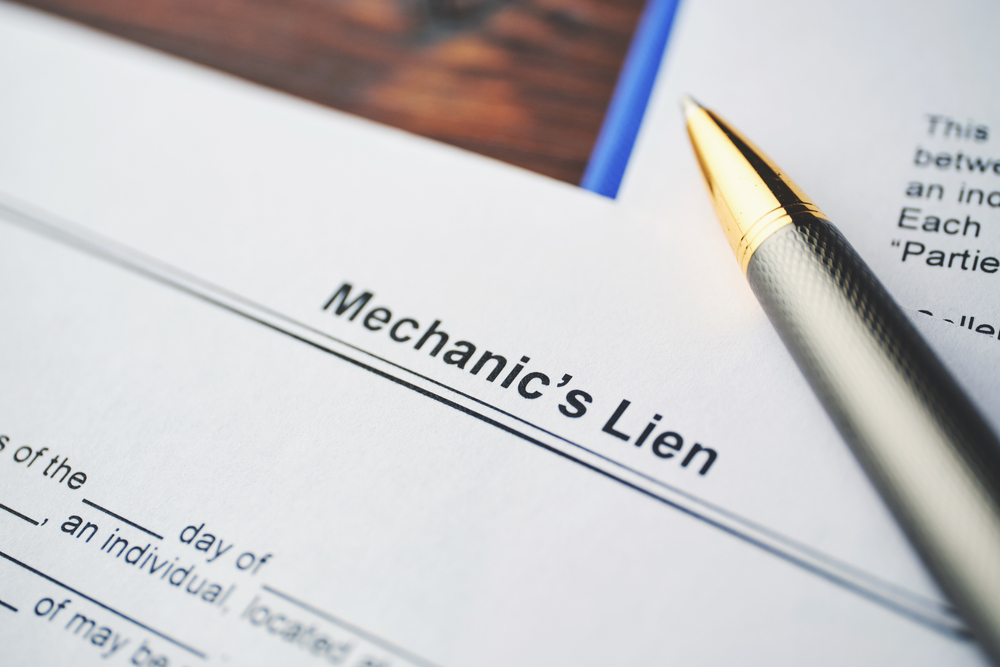

Chapter 3 of Quit Getting Screwed, by Karalynn Cromeens
Lioncrest Publishing
Super AC Subcontractor was awarded their biggest subcontract ever: $3 million.
All they had to do before starting was to obtain a payment bond and a performance bond for the full amount of its subcontract. This was a requirement, so they did it. After they got the required bonds, they signed the subcontract and couldn’t wait to get to work.
The project went great at first, but eventually, Super AC Subcontractor realized that it could not complete the project for the subcontract price. After Super AC Subcontractor reviewed the scope of work agreed to in the subcontract, it turned out they were about $250,000 short in the subcontract price because they missed something in the bid. Super AC Subcontractor took a hard look at their finances and searched for ways they could use the money they had to finish the project, even though the project would be a huge loss. After a careful review of their books, Super AC Subcontractor determined that finishing the project would actually put them out of business. They couldn’t finish the project without additional funds from the general contractor for their scope of work.
Super AC Subcontractor approached the general contractor, explained the issue, and begged for additional funds to finish the project. The general contractor ignored the request. At this point, it became clear to Super AC Subcontractor that the only reason they were hired was because their bid was at least $250,000 lower than the other bids the general contractor received.
Super AC Subcontractor completed as much work as they possibly could but were eventually forced to abandon the project because they couldn’t afford to pay for the work. As soon as Super AC Subcontractor left the project, the general contractor declared them in default and filed on their bonds. The surety paid the amounts demanded by the general contractor.
This is a true story, and it gets worse. Not only did the subcontractor go out of business, but all of the owner’s personal assets were seized to repay the surety (the company that issued the bonds) that paid the claim.
“How?” you might be asking. Let me explain.
The subcontractor bond is sold as a way for the general contractor to protect itself from the risk of the subcontractor going out of business, being unable to finish its scope of work, or pay its laborers and/or material suppliers. In the unfortunate case that it is used as a shield, it does not sound so bad. The bond works as a shield and protects the general contractor from the unfortunate event of a subcontractor going out of business or anything that would keep the subcontractor from performing. However, the bond could be used as a sword when the general contractor knows you have underbid the project and knows you cannot complete the work. They will then make you get a bond so they can file on the bond and make money off your tragic loss, as in the case of Super AC Subcontractor.
It’s important to note that a subcontractor bond is not insurance. If there is a claim filed on your bond and the bond company pays the claim, you are required to pay back every penny that the surety pays out. To obtain a bond, you have to sign a personal guarantee and pledge your personal assets (more on this in chapter 5).
There are two different types of bonds: a payment bond and a performance bond. A payment bond is to ensure that all of your laborers and material suppliers are paid. If a general contractor receives a notice of claim from your laborers and/or material suppliers that they remain unpaid, the general contractor can file a claim on your bond for payment of those amounts. A performance bond will cover the cost to complete your scope of work if you abandon or are terminated from the project. If you do not finish your scope of work, the general contractor can file on your performance bond to seek the cost required to complete your scope. Normally, each bond is required to be in the full amount of your subcontract.
The paperwork required to be signed to obtain a bond is onerous, to say the least. Sureties require a personal guarantee from all of the principals of the company and a pledge of their personal assets and personal bank accounts to satisfy any amount paid by the surety.
Your agreement with the surety also gives them the sole discretion of whether to pay or deny a claim that is filed against your bond. What does this mean? For example, say a general contractor is trying to back charge you $200,000. You disagree with the requested back charge and explain to the general contractor why you disagree. Ignoring your argument, the general contractor files a claim on your bond for the $200,000. The bond company receives the claim and, without any input from you, pays the claim. In the paperwork you signed to get the bonds, you gave the surety the authority to decide to pay the claim. Now they are demanding you repay the $200,000 immediately, or they will begin collection efforts.
If you decide to take the risk and have a subcontractor bond issued, get to know the bond company and have them get to know and understand your company. If you establish a solid relationship with them, they are less likely to immediately pay a claim that is filed on your bond without hearing your side of the story. If you get a notice that a general contractor has filed a claim on your bond, you need to respond with your side of the story immediately, or the bond company will most likely just pay the claim.
If you are required to obtain a subcontractor bond, there are a few ways to protect your company, one of which is to add some language to your subcontract. The language in a subcontract requiring bonds is usually short and simple. For example:
Subcontractor shall provide performance and payment bonds if required by Contractor, on a form acceptable to Contractor, and by a surety acceptable to Contractor for the full amount of the subcontract.
Or it might look something like this:
In the event that the Subcontract Agreement exceeds $100,000.00, Subcontractor shall furnish to the Contractor at Subcontractor’s expense, surety bonds guaranteeing the faithful performance of this Subcontract Agreement and payment of all labors and material suppliers.
The language as written is fine; it is what is missing that becomes harmful. First, you should not be required to provide a bond if you have already started working. Next, you need to add in some language that gives you some control over when your bond will pay claims. Finally, the cost of the bonds needs to be added to your subcontract amount.
Here is the language you would add to the paragraphs above to protect your company:
If Contractor does not request Subcontractor to provide a bond before Subcontractor begins work, Contractor waives its right to require Subcontractor to obtain a bond. If Contractor requests Subcontractor to obtain a bond, Contractor will reimburse Subcontractor for this expense. Subcontractor reserves the right to object to any claims filed on its bonds, and once Subcontractor objects, the surety shall not pay the claim until ordered by a court or arbitrator to do so.
Another way to protect your company if you are required to obtain a subcontractor bond is to request a copy of the general contractor’s bond. This way, if you cannot pay your laborers or material suppliers because the general contractor has not paid you, you can file on their bond.
There are no legal requirements for subcontractor bonds, which means that you can refuse to get a subcontractor bond and remove the provision requiring a bond from the subcontract before you sign. You may not get the project if you refuse, but now you know the risk and can make an informed decision.
When a general contractor requires their subcontractors to obtain bonds, it is referred to as “bonding back.” Bonding back is the general contractor’s way of mitigating their risk, because they are taking a risk in hiring your company. But what happens when the reason you cannot pay your bills for the project is because the general contractor is not paying you? You can file on the general contractor’s bond for payment—but only if you have a copy of their bond.
It is best practice to get a copy of the general contactor’s bond at the beginning of the project because the only way you can obtain a copy is from the general contractor. You can imagine how easy it would be to get a copy if you are not getting along.
I may be a little bit jaded on subcontractor bonds, but that’s because I have never dealt with a successful subcontractor bond project. In fact, I have another client story to illustrate the danger of subcontractor bonds.
I represented a drywall subcontractor who was awarded a $300,000 contract for a public project that required special badges to access the project. Although the subcontract said that bonds could be required, none were required at the start of the project. About halfway through the project, the general contractor requested that my client obtain bonds. As required by the subcontract, my client complied and had a bond issued in the full subcontract amount. Because the subcontract did not have language preventing the general contractor from demanding a bond during the course of the project, my client had no choice but to comply or be in breach of the subcontract.
A few months later, when the subcontractor showed up for work one morning, the project manager stopped him at the entrance, demanded to see his access badge, and said they were no longer allowed on the project. Confused, my client immediately sent an email to the project manager and the higher-ups at the general contractor’s office, asking what was going on and why his company’s badges were pulled. In the email, he also stated that he was ready and able to perform the work, but he never received a response.
Five days later, my client received a notice of default letter for not performing his work on time. This same letter was sent to my client’s bond company. My client promptly responded to the notice of default letter, explaining what had happened and attached an updated schedule to finish the project. My client sent this letter to the project manager, the higher-ups at the general contractor’s office, and his bond company. Still, no response.
Fifteen days later, still being denied access to the project, my client received a notice of termination letter from the general contractor. My client was terminated for failing to perform his work promptly, and an official claim was filed on his bond. Fortunately, this particular bond company reviewed my client’s response and did not pay the claim.
It certainly didn’t look like this happened because of my client’s poor performance. Instead, what most likely happened was the general contractor ran into money problems and thought of a creative way to make some of it back. Although my client was halfway through the project, the general contractor demanded that my client obtain a bond for the full contract amount. Because my client had a provision saying a bond may be required, but did not have specific language limiting when the bond could be required (like the suggestion above), my client was forced to obtain one or be in violation of the subcontract. After the bond was successfully acquired, my client was then locked out of the project, keeping him and his team from performing their work, which put them in default. Once in default, the general contractor filed on my client’s bond.
In the general contractor’s past experience, once they filed a claim on a subcontractor’s bond, the bond company would just pay the claim. In this case, however, since my client had a relationship with the bond company and because he immediately responded in writing to the claim, instead of paying, the bond company began an investigation. This infuriated the general contractor, who immediately filed suit against the bond company, demanding payment of the claim.
The general contractor sued the bond company for $200,000, which they claimed as damages they suffered because my client failed to complete the project. That number was ridiculous—in fact, the whole lawsuit was ridiculous. Unfortunately, my client did not have the hundreds of thousands of dollars required to defend himself and prove his side of the story. Even if he could prove that he were wrongfully terminated, the subcontract had a termination for convenience clause, which meant they could terminate my client for no reason. (We will go over this clause in chapter 18.) My client couldn’t just ignore the lawsuit either, because the bond company would pay the claim and then come after him and the four other family members who ran the company and had signed personal guarantees to get the bond. So we made the best deal we could. To prevent a huge judgment being taken against him, he agreed to pay the general contractor $50,000 in payments over two years.
This case still pisses me off because I could not do anything to fix it. But now you know how dangerous subcontractor bonds can be. This is why I want you to understand what is in your subcontract and learn what terms need to be negotiated. Quit just signing the subcontract without reading it just to get the work; it is not worth the risk. You risk all of your business and personal assets to obtain a subcontractor bond. If you decide the project is worth the risk of obtaining a bond, at least negotiate some protection in the subcontract.
Although we already touched on this a bit in chapter 1, in the next chapter, we will do a deep dive into what you should pay attention to when it comes to part of the subcontract called “Scope of Work.”
| Key Points |
| 1. When you get a subcontractor bond, you are pledging your personal assets for the project. |
| 2. Build some protections into the subcontract, do not get a bond after you have started the project and limit when the bond can payout. |
| 3. If you get a bond for the project, make sure you get a copy of the general contractor’s bond before you begin work. |
Karalynn Cromeens is the Owner and Managing Partner of The Cromeens Law Firm, PLLC, with over 17 years of experience in construction, real estate, and business law. A published author and passionate advocate for contractors, she has dedicated her career to protecting the businesses her clients have built. Karalynn is on a mission to educate subcontractors on their legal rights, which inspired her books Quit Getting Screwed and Quit Getting Stiffed, as well as her podcast and The Subcontractor Institute.

